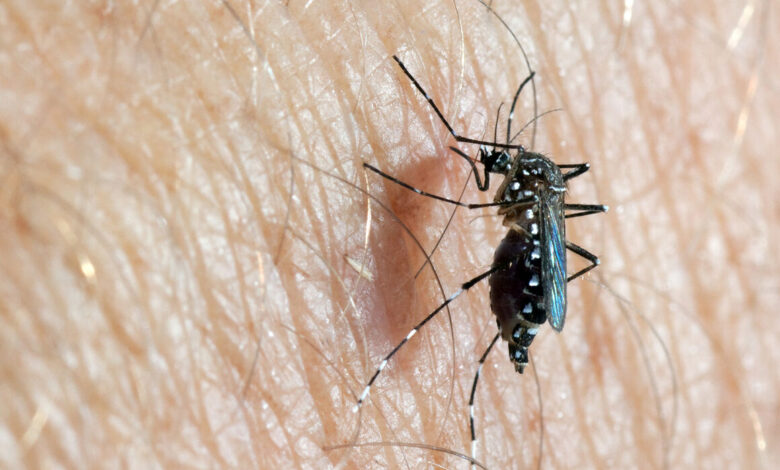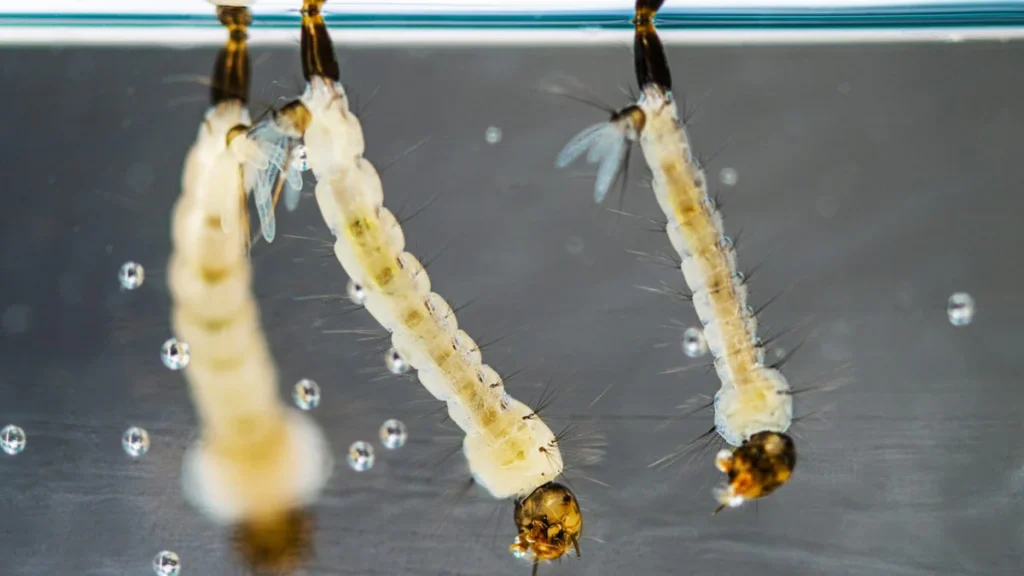
Dengue fever is a viral infection transmitted by the Aedes aegypti mosquito, which thrives in areas where stagnant water provides an ideal breeding ground. While dengue is a concern in many tropical and subtropical regions, the connection between keeping pets, open water sources, and the risk of attracting dengue-carrying mosquitoes is often overlooked. Many pet owners, especially those who provide fresh water for their pets, may unknowingly create breeding spots for mosquitoes.
Let’s talk about how dengue fever spreads, how mosquitoes breed, and why it’s essential for pet owners to stay vigilant about maintaining a clean environment.
Understanding Dengue Fever: How It Spreads
Dengue fever is caused by the dengue virus, which is transmitted to humans through the bites of infected female Aedes mosquitoes. These mosquitoes typically bite during the day, especially early in the morning and before sunset. Once bitten by an infected mosquito, symptoms of dengue can appear within 4 to 10 days and may include high fever, severe headaches, pain behind the eyes, joint and muscle pain, skin rashes, and mild bleeding from the gums or nose.
While dengue can range from mild to severe, its most dangerous form, dengue hemorrhagic fever, can lead to death if not treated properly. The Aedes mosquitoes, specifically Aedes aegypti, prefer to lay their eggs in clean, still water, making any exposed water source a potential breeding ground. This includes pet water bowls, bird baths, and any containers left outdoors.
The Connection Between Pets and Mosquito Breeding
For those who own pets, the idea of keeping fresh water out for them, whether indoors or outdoors, is second nature. However, many pet owners may not realize that by leaving water sources exposed, especially outdoors, they are potentially inviting Aedes mosquitoes into their living environment.
Mosquitoes, particularly those that transmit dengue, are highly adaptive and can lay eggs in the smallest amounts of water. Pet water bowls, even if changed daily, can become a prime location for mosquito breeding. Bird baths, garden ponds, or any containers that collect rainwater, such as plant saucers and discarded tires, also serve as ideal habitats for mosquito larvae.
It’s important to note that mosquitoes can lay eggs in water as shallow as 1 centimeter. These eggs can hatch into larvae in as little as 24 to 48 hours, making stagnant water one of the most critical factors in controlling the mosquito population.
Warning Signs of Dengue Fever?
Recognizing the symptoms of dengue fever early is crucial for effective management and treatment. If you or someone you know is experiencing any of the following warning signs, seek medical attention immediately:
- Abdominal Pain or Tenderness: Persistent or severe pain in the abdominal area can indicate complications associated with dengue fever.
- Persistent Vomiting: Continuous vomiting may suggest severe dengue and requires prompt medical evaluation.
- Clinical Fluid Accumulation: Fluid buildup in the body, such as in the abdomen or lungs, can be a sign of serious dengue complications.
- Mucosal Bleeding: Bleeding from mucous membranes, such as the gums or nose, is a warning sign that should not be ignored.
- Lethargy or Restlessness: Unusual drowsiness or agitation can signal a progression to severe dengue.
- Liver Enlargement > 2 cm: Significant enlargement of the liver, detected during a physical examination, can indicate severe dengue.
- Laboratory Findings: An increasing hematocrit (HCT) level combined with a rapid decrease in platelet count may signal the onset of severe dengue and warrants urgent medical attention.
Early detection and treatment are critical to managing dengue effectively and preventing severe complications.
How to Keep Pets Hydrated Without Attracting Mosquitoes
As a responsible pet owner, providing clean, fresh water for your animals is crucial, especially during hot weather. However, there are simple yet effective strategies to reduce the risk of creating mosquito breeding spots around your home:
1. Change Water Bowls Regularly
One of the easiest ways to prevent mosquito breeding is by changing your pets’ water bowls frequently. Ideally, you should replace the water at least once or twice a day. Mosquitoes can lay eggs in stagnant water within 24 hours, so frequently changing the water disrupts their breeding cycle.
2. Use Mosquito-Proof Water Bowls
Some pet owners have turned to mosquito-proof water bowls that are designed to minimize standing water and make it difficult for mosquitoes to access the water. These bowls often have a design that covers most of the water surface, leaving only a small drinking area for pets.
3. Keep Water Bowls Indoors
If possible, keep your pets’ water bowls indoors. This not only keeps the water cleaner but also reduces the likelihood of mosquitoes accessing it. For outdoor pets, consider placing water bowls in shaded or covered areas, as mosquitoes prefer to breed in sunny spots.
4. Avoid Overwatering Plants
Overwatering plants can lead to stagnant water accumulating in the soil or saucers under the pots, which mosquitoes love. Be mindful of how much water your plants need and avoid leaving saucers filled with water for extended periods.
5. Cover and Clean Open Water Sources
If you have open water sources in your yard, such as bird baths, ponds, or rainwater collection barrels, ensure they are covered or cleaned regularly. For ponds, consider adding fish that eat mosquito larvae, such as guppies or goldfish. Alternatively, use mosquito dunks, which are non-toxic and help to kill larvae.
Understanding the Mosquito Breeding Cycle
To better understand how to prevent mosquito breeding, it’s essential to know their life cycle. The Aedes mosquito has four stages of development: egg, larva, pupa, and adult. Mosquitoes lay their eggs in stagnant water, and these eggs hatch into larvae within 48 hours. The larvae then develop into pupae, which in turn become adult mosquitoes in about 5 to 10 days, depending on environmental conditions.
Adult mosquitoes can live for several weeks, and during this time, female mosquitoes seek blood meals to nourish their eggs. Understanding this cycle underscores the importance of preventing mosquitoes from having access to standing water, as it takes only a few days for an entire new generation of mosquitoes to emerge.
Dengue Prevention: Beyond Just Pet Owners
While pet owners need to be particularly cautious about open water sources, dengue prevention is a responsibility that extends to the entire community. The following additional measures can help reduce the risk of dengue:
- Use Mosquito Repellents: Apply mosquito repellents containing DEET, picaridin, or oil of lemon eucalyptus when spending time outdoors.
- Install Screens on Windows and Doors: Mosquito-proof your home by installing screens to prevent mosquitoes from entering.
- Wear Protective Clothing: When outdoors, especially during peak mosquito activity, wear long sleeves, long pants, and light-colored clothing to reduce exposure to mosquito bites.
- Eliminate Other Breeding Grounds: In addition to water bowls, inspect your property for other potential breeding spots, such as clogged gutters, uncovered trash bins, or buckets left outside.
Protecting Both Pets and People
Maintaining a healthy environment for both your pets and family members doesn’t have to mean sacrificing safety. By taking proactive steps to prevent mosquito breeding in and around your home, you can help protect your loved ones from dengue fever without compromising your pets’ health.
It’s crucial to stay informed about the risk of dengue, especially if you live in a region where dengue fever is prevalent. For pet owners, this means being mindful of any open water sources and adopting measures to prevent stagnant water from becoming a breeding ground for mosquitoes.
How Do You Identify Dengue Larvae?
Identifying dengue larvae is a crucial step in controlling the spread of the dengue virus because it allows you to recognize potential breeding sites of the Aedes mosquito before they reach adulthood. The larvae of Aedes aegypti, the primary vector for dengue, have specific characteristics that make them distinguishable from other mosquito species, such as Anopheles (which carries malaria).

To identify dengue-borne larvae, here are the key features to observe:
- Siphon Tube: The Aedes mosquito larvae possess a small, slender siphon tube located at the tail end, which they use to breathe at the water’s surface. In contrast, Anopheles larvae lack this siphon tube and rest parallel to the water surface. The presence of the siphon tube in Aedes larvae is one of the easiest ways to distinguish them.
- Body Shape and Position: Aedes larvae typically hang at a 45-degree angle from the water surface, with their head facing downward. This angle is distinct compared to Anopheles larvae, which float horizontally at the surface.
- Hair on Body Parts: One of the morphological key features to distinguish dengue larvae is the presence of tiny hairs along their body. These hairs give the larvae a more defined, fuzzy appearance. In contrast, non-dengue mosquito larvae may have a smoother look with fewer body hairs.
- Body Segmentation: Aedes larvae are segmented, and each segment can have visible bristles or tiny hairs. Their dark-colored body and head are also notable, with a relatively thin and elongated form compared to other mosquito species.
- Movement Patterns: Aedes larvae have a unique movement in water. They often jerk or wriggle in quick, sharp motions, unlike the smooth, gliding movements of Anopheles larvae.
By closely observing these characteristics, especially the presence of the siphon tube and the unique movement patterns, you can identify whether the larvae you find are likely dengue-carrying Aedes mosquitoes. This identification can be instrumental in breaking the breeding cycle before the mosquitoes reach adulthood and become a health risk.
Follow us on Google News, Instagram, YouTube, Facebook, Whats App, and TikTok for latest updates.















